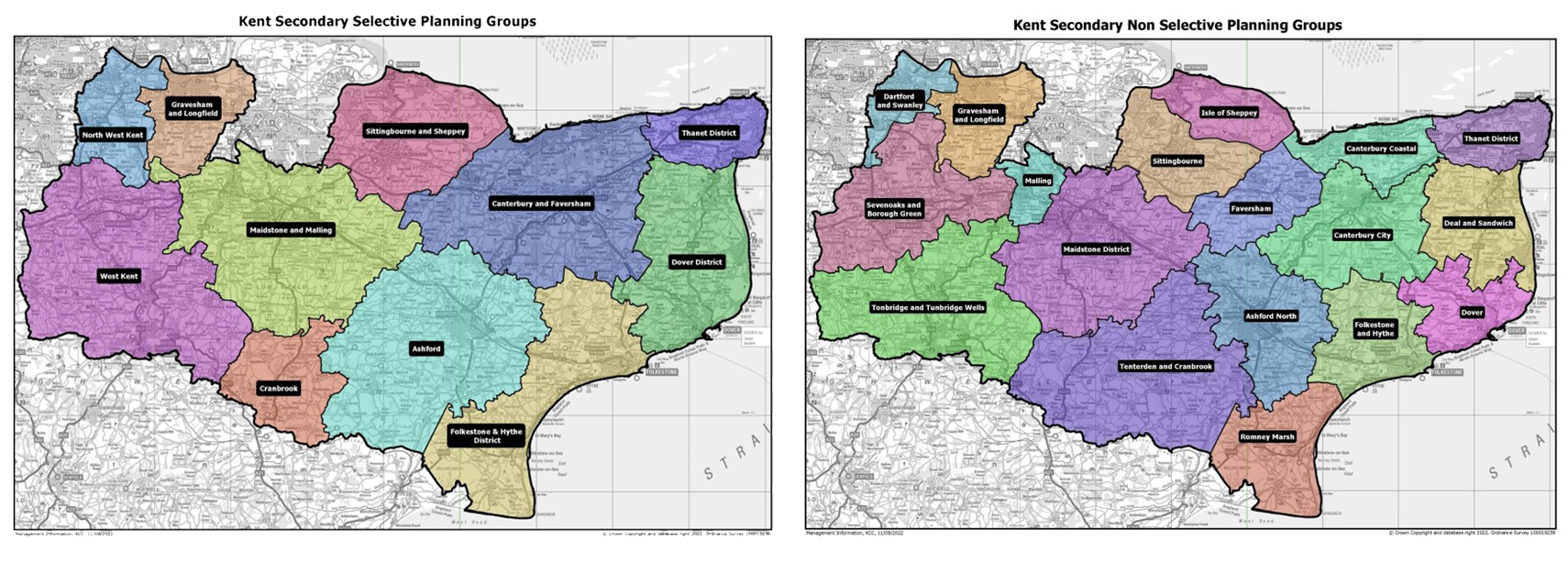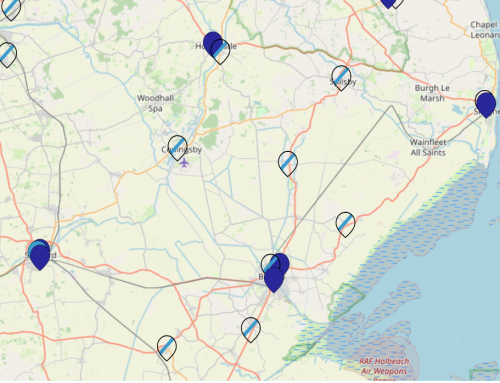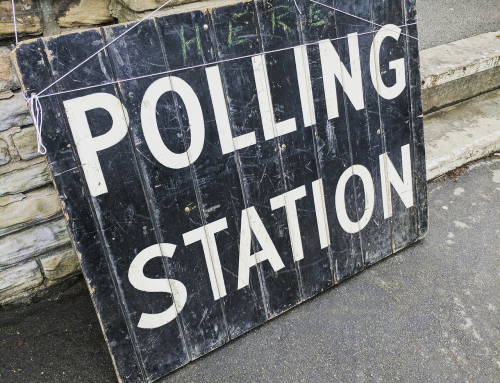Kent County Council reviews school place planning every year, creating a school commissioning plan to forecast where in the county there’s a need for new school places.
This school planning exercise has forecast a need for 6 forms of new selective provision in Gravesham and Longfield by 2026, with the council exploring options for new ‘satellite’ grammar schools. The document points out, ‘No new grammar schools can be built according to current government legislation.’ Yet, they are still considering this route, while flagging that options to do this would be ‘logistically challenging and expensive.’ Two of these legally dubious new grammar schools have been built in Sevenoaks in recent years.
A Labour government is predicted to be in place by 2026 so we can only hope that they confidently tell KCC that grammar schools are banned for very good reasons. There are two grammars in this Gravesham planning group, one educates just 6.5% FSM pupils and the other only admits 5.1%. The closest two non-selective schools admit 29% and 40% FSM pupils. If KCC do use a legal loophole to increase grammar places in Gravesend then their new ‘satellite’ schools will certainly be disadvantageous for the poorest pupils in the local community.
I decided to take a deeper look at KCC’s rationale for grammar school expansion. The council’s annual review of school places is, of course, a worthwhile and sensible exercise, but there is one vague and illogical point. The planning document states, ‘Proposals for additional secondary places need to demonstrate a balance between selective and non-selective school places.’ So how do KCC define this balance? Well, they don’t. They seem to want a balance without telling anyone what the proportions of selective to non-selective school places should actually be.
The only reference I can find to how many Kent pupils should be allocated grammar places is from 1998 when the percentage was set at 25%. The county has busted that percentage significantly as grammars expand, so now 32% of Kent secondary pupils are educated in grammars.
Why 32%? Is this a more meaningful figure than the 25% set in 1998? Or has this increase happened by chance with no one reviewing whether it’s a good thing or a bad thing? I’m sure that the non-selective schools will see more of a ‘secondary modern’ effect than they used to. It’s a fact that grammar pupils must be less academically elite than they were 20 years ago. Do either of these things matter? No one checks. No one cares. Yet KCC keep on planning the right ‘balance’ every single year in their school place planning document. It seems the balance they’re looking for is 25% or 32%, or an unscientific, random, amount somewhere in between the two. Is this ‘right balance’ just a meaningless phrase?
The school place commissioning plan divides each area of Kent into a ‘Selective Planning Group’ and a ‘Non-Selective Planning Group.’
We can see that many of the groups are the same, but some, inexplicably have different boundaries. The commissioning plan lists figures for 2022-2023 year 7 places in both selective and non-selective schools. This means that for many Kent areas we can check the ‘balance’ between grammar school and non-selective pupil numbers.
Thanet District offers 345 year 7 selective places and 1,159 non-selective places. This means 22.9% of places are in grammar schools.
Dover District offers 440 year 7 selective places, and in Dover, Deal and Sandwich (the equivalent non-selective planning group) there are 935 non-selective places. So 32% of places are in grammar schools.
Canterbury and Faversham offers 615 year 7 selective places. In Canterbury City, Faversham, Canterbury Coastal non-selective school group there are 1,538 places. So 28.5% of school places are in grammar schools.
Folkestone and Hythe District offers 330 year 7 selective places. In Folkestone and Hythe and Romney Marsh there are 1,135 non-selective school places. So 29% of school places are in grammar schools.
Maidstone and Malling offers 785 year 7 selective places, while Maidstone District and Malling offer 2,888 non-selective places. So 27.1% of school places are in grammar schools.
Gravesham and Longfield offers 420 year 7 selective places and 1,340 non-selective places so 23.8% of school places are in grammar schools.
It must be very difficult to plan the correct balance of grammar to non-selective places in Kent with no obvious figure to work to, and with variable proportions all around Kent. Another thing that must make this calculation tricky for school place planners is the well-known correlation between socio-economic status and passing the 11-plus test.There is a county-wide 11-plus in Kent, which means that many more pupils will pass in leafy Tunbridge Wells than in deprived coastal communities such as Dover or Folkestone. In poorer areas not enough pupils pass so the grammars run easier 11-plus tests to fill their places.
It wasn’t possible to calculate the proportion of grammar places in West Kent due to the selective and non-selective planning groups having different borders. However, I looked at Tunbridge Wells which has 3 grammar schools and 3 non-selective schools, and DfE data shows that 43% of school places in the town are selective.
So it seems that the right ‘balance’ of selective to non-selective places in Kent, based on the evidence we have, is that it’s somewhere between 22% and 43%.
This balancing act only ever seems to push the percentage of grammar places upwards. So what about the areas with lower percentages than average, are parents up in arms? No they’re not, they don’t even know. No one in Thanet is aware that they send less pupils to grammar schools than other Kent communities.
KCC runs the ‘Kent Test’ 11-plus and each year someone in a council office will decide how many pupils will pass the test or fail the test. A council officer could decide to pass a few thousand more or a few thousand less and the Dartford grammar schools would find themselves either over capacity or under capacity. And then the whole planning document could be rewritten without any need for expensive new grammar school satellites. Or, here’s another idea, KCC could just point to the rest of the country and tell its citizens that they want the same ‘balance’ of selective to non-selective places as everywhere else. Most of the country is doing just fine with 0% grammar places.






